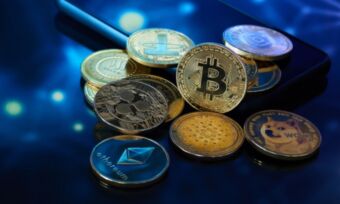Thinking of entering the Non-fungible token (NFT) market with a digital asset of your own? Here’s your guide on how to create an NFT in three easy steps and what you should know before you begin.
What is an NFT?
When something is considered non-fungible it means that it cannot be exchanged for another, because it is unique. Take for example, artwork. It would not be possible to exchange one piece of art for another because they both have unique properties. On the contrary, cash and coins are considered fungible because they can be exchanged for the other – one dollar is always equal to another.
Because digital assets can be copied and duplicated easily, NFTs, or non-fungible tokens, were created to provide proof of ownership over a digital asset. Again, think of it as a piece of artwork – although many prints can be created, often the original piece is most valuable. The benefit of owning an NFT is you can sell it to others and potentially make a profit.
Step 1: Pick your digital asset
An NFT can be anything that is digital. Some examples are:
- images
- videos
- articles
- music
- memes
However, you will need to consider what will appeal to others, and that can be tricky as it is highly subjective. A good place to start is by looking at other NFTs, particularly ones that are popular and have sold well. Generally, successful NFT projects are ones that have a healthy community following and plenty of engagement. According to the UX Collective, “NFTs are more than just owning a piece of art, they are being part of a community, where a culture has been created, and culture creates a following.”
Another key point to remember is that you should only use a digital asset that you have created yourself and own the intellectual property rights to.
Step 2: Mint your NFT
The process of creating an NFT is called minting, and you will need to buy cryptocurrency, typically Ethereum before you begin. To mint an NFT you will first need to decide which NFT marketplace to use, here are some you may want to consider:
- Openseas
- OpenSea
- SuperRare
- Nifty Gateway
- Rarible
- NFT ShowRoom
- Axie Marketplace
When you’ve decided on a platform to use, the next step is to connect your cryptocurrency wallet so you can pay the minting fees and transact through the platform. Typically, the option to mint your NFT can be found on the homepage, however, the exact process and cost to mint your NFT depends on the platform you use.
Related article: How to buy NFTs in 5 Easy Steps
Step 3: Sell your NFT
Once your NFT has been successfully minted, you should have the option to list your NFT for sale. First, you will need to create a profile. To give yourself and your NFT more credibility, it’s recommended you share a little about yourself and provide links to your social media accounts and a website if you have one, as well as a description of the NFT.
Generally, NFTs are sold at auction, so you will also need to determine when the auction will take place, or list the sale price if you choose not to do an auction. Remember to specify what cryptocurrency you’d like to be paid in and what you expect from royalties if your NFT is sold on.
It’s also a good idea to promote your NFT before the auction date. Consider spruiking your NFT on your social media pages and website. If you already have a community following this can be a great way to help your piece sell at auction.
Can you make an NFT for free?
It is possible to mint your NFTs for free and this can be done through lazy minting which is available on some platforms, including Openseas and Rarible – which are two of the most popular marketplaces. Lazy minting is when the minting process doesn’t actually take place until the NFT is purchased at which point the purchaser incurs the fees. For both Openseas and Rarible the fee is 2.5% or the sale price.
Should you create an NFT?
Because of the fees involved in making an NFT, if it doesn’t sell you could make a loss, so it is important to consider carefully if making an NFT is right for you. Do you have a digital asset that is likely to sell well, does it already have a community following and lots of engagement? Also, ask yourself if creating an NFT aligns with your investment goals and strategy.
Cover image source: elenabsl/Shutterstock.com
This content was reviewed by Content Producer Isabella Shoard as part of our fact-checking process.






Share this article